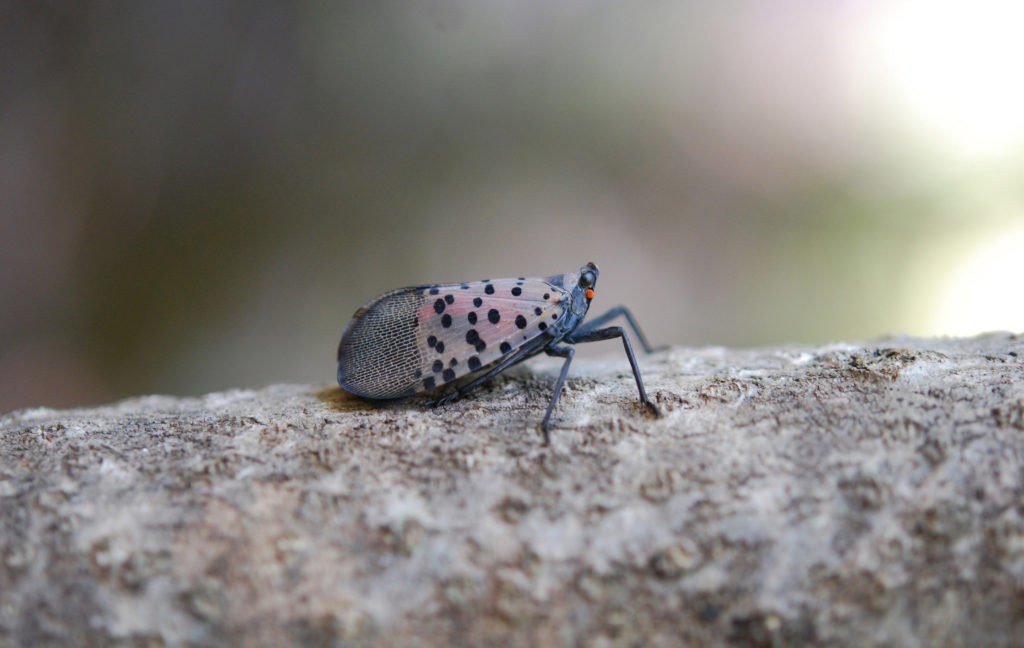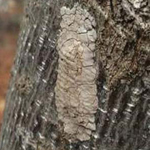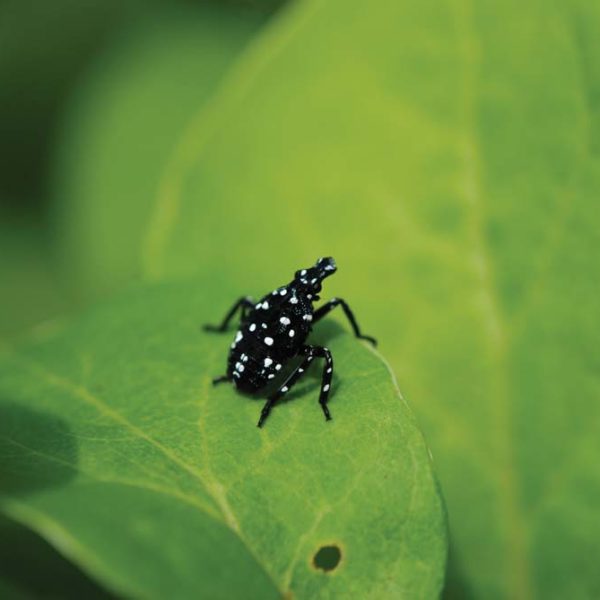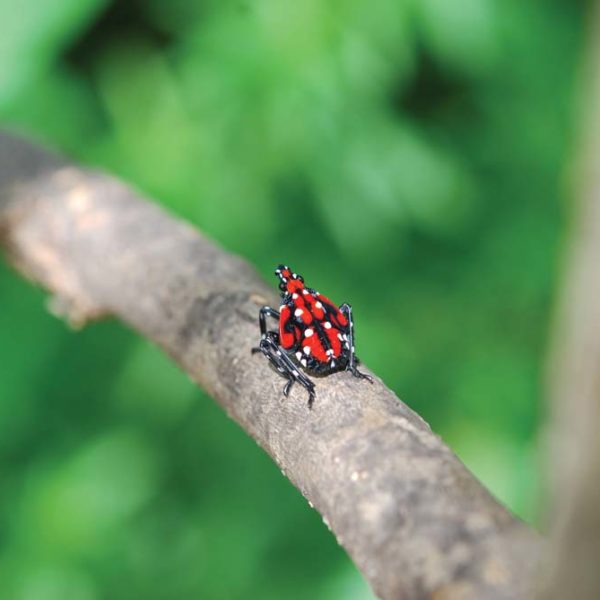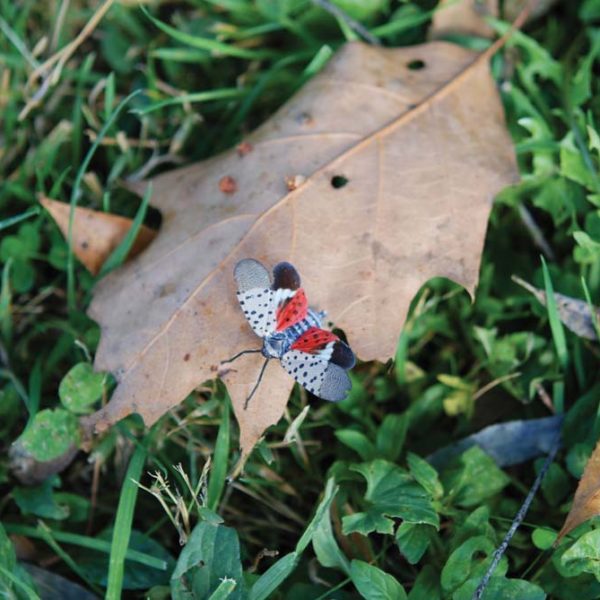Recently, you may have discovered a new invasive pest around Montgomery County, the Spotted Lanternfly (SLF). Just like the Emerald Ash Borer, these pests pose a threat to homeowners’ trees and Pennsylvania’s agriculture, including the grape, tree-fruit, hardwood, and nursery industries. The spotted lanternfly attacks fruit trees by feeding on the sap in the trunks, branches, twigs, and leaves. While digesting the sap, it excretes a sticky fluid which attracts other insects and encourages the growth of mold.
I see spotted lanternflies on my property. Now what?
Confirm that the insect is actually SLF
Take a look at the pictures below. The pictures illustrate the SLF at all of its life stages: egg mass, nymph, and adult. You can also learn more about identifying the SLF on Penn State Extension’s spotted lanternfly guide for homeowners.
Learn about its life cycle and habits
Eggs are laid in late fall and hatch in the spring. Throughout the year, you could be seeing both adults that emerged in July and remain active until winter, along with newly laid eggs. Egg masses are laid on trees, decks, houses, and other hard surfaces and are protected by a mud-like covering. SLF adults are the most detectable stage since they are large, brightly colored, and mobile.
Manage the pest’s invasion
There are two major steps you can do to stop the spread of SLF. The first step is to check your car and any outdoor equipment (grills, mowers, firewood, etc.) when you go in and out of Montgomery County. If you find SLF eggs, nymphs, and adults, do not transport them out of the quarantine zone.
The second step is to manage the SLF on your own property. To do this, you should scrape the eggs and dispose of them, band trees to catch nymphs, remove the favored host tree (tree-of-heaven), and use insecticides when appropriate.
If you believe you have SLF on your property, read Penn State Extension’s guide for homeowners.
Additional Resources
PennState Extension and the Pennsylvania Department of Agriculture are two great resources for learning more about the spotted lanternfly. They provide videos, articles, and photo galleries to help people learn how to identify the insect and what to do once they find it.
Call the Spotted Lanternfly Hotline at 1-888-422-3359.
Information provided by PennState Extension and PA Department of Agriculture.


